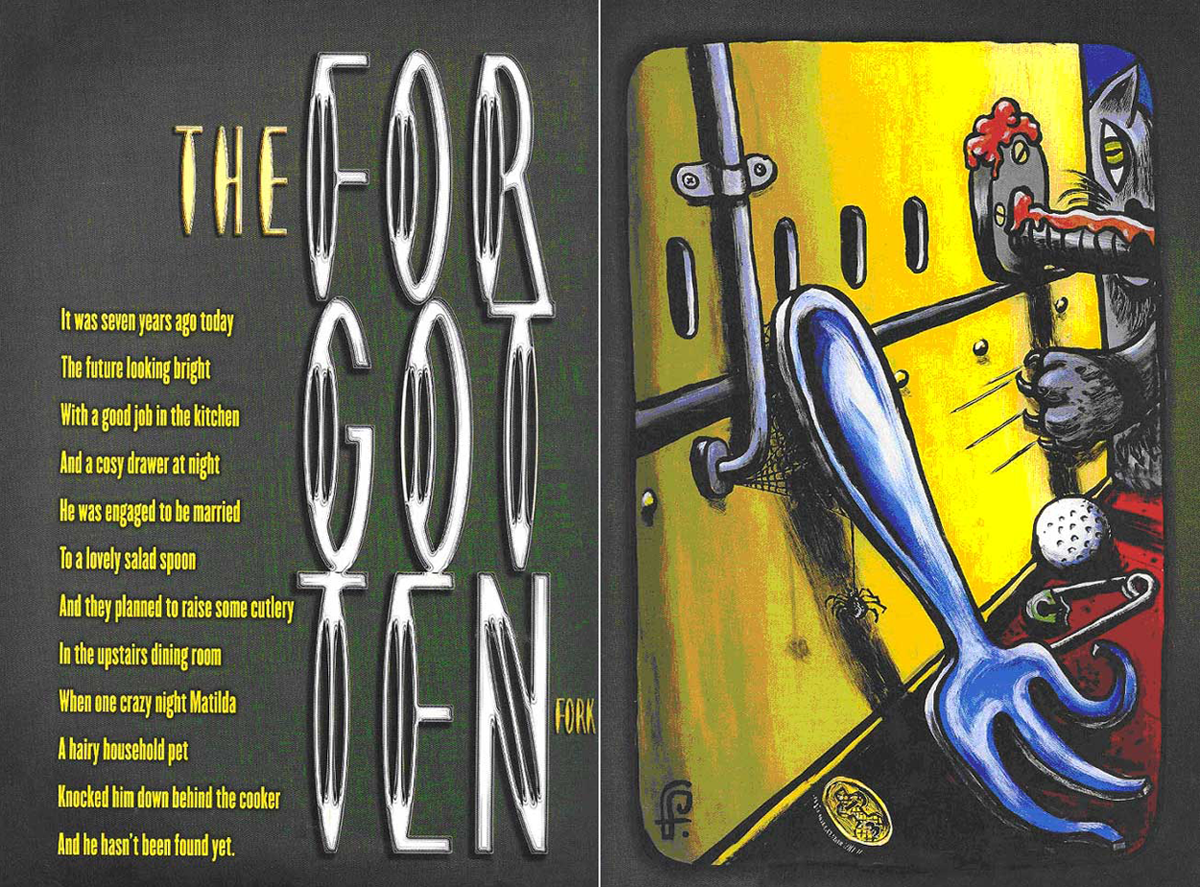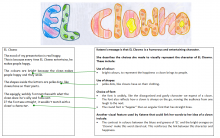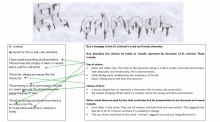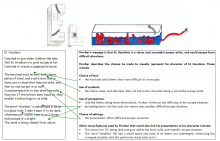The forgotten fork II
This task is about using visual techniques to communicate ideas.
This resource uses a presentation from 'The Underwater Melon Man' by Flaws, Baysting and Dasent.
Read the poem and look closely at the illustration. You will use ideas from the poem and the illustration to create your own visual presentation to share with others.

The title Forgotten Fork is made up of two words that begin with the same sound. This is called alliteration.
The author has given the fork human qualities such as loneliness and dejection. This is called personification.
Your task is to:
- Choose an object found at school, e.g., a ruler, a calculator, a rubbish bin.
- Give it a name that uses alliteration.
- Give it human qualities.
- Create a visual presentation of your object.
- Explain the techniques you have used in your visual presentation.
- Share your visual presentation and explanation with a classmate to get their feedback.
Create a visual presentation of your object to show its human qualities. Think about techniques you can use to achieve this.
Look below and consider




